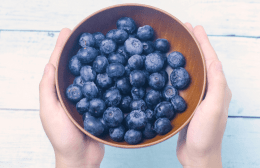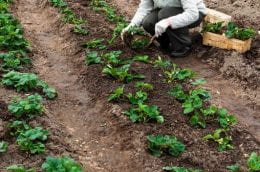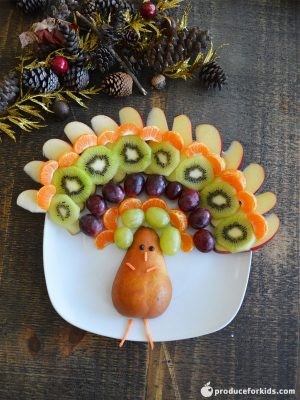 Growing blueberries in containers is becoming more popular. Chosen varieties are usually half-high plants that are a cross between highbush and lowbush blueberry species. Plants can be as small as 18 inches tall and wide (Top Hat), but typically are larger. Here are several tips for producing container grown blueberries:
Growing blueberries in containers is becoming more popular. Chosen varieties are usually half-high plants that are a cross between highbush and lowbush blueberry species. Plants can be as small as 18 inches tall and wide (Top Hat), but typically are larger. Here are several tips for producing container grown blueberries:
Acid soil pH: Blueberries need an acid pH between 4.8 and 5.2. Sphagnum peat moss is very acidic and often used in large quantities in soil mixes for acid-loving plants. In fact, blueberries can be grown in peat moss alone if nutrients are provided, but that is an involved process. A 50/50 mix of peat moss and potting soil is recommended. This will provide nutrients and weight so the plant is less likely to blow over in wind.
Container size: Though containers as small as 2 gallons can be used for half-high blueberries, a larger container will be more stable in the wind and provide a larger moisture reserve during hot, dry weather.
Watering: Blueberries do not have root hairs, so they are not efficient in picking up water. Potting soil should be kept moist. This will likely be the most challenging aspect of growing blueberries in containers. A large container will not need to be watered as frequently as a small one.
Winter care: Though plants are winter hardy, the roots are not. Move pots into an unheated, attached garage or bury them in the soil or mulch enough to bury the pot in early November. Water them periodically during the winter. Use your finger to determine if the soil is moist one inch deep. If not, then water until some flows out the bottom of the pot.
Varieties: Though blueberries will produce some fruit if only a single variety is grown, two varieties will increase the potential fruit crop. Suggested varieties include Top Hat and Northsky. Each should reach about 18 inches high, though Northsky will likely grow wider than Top Hat. Northblue is another choice that should produce more fruit than either Top Hat or Northsky but should reach 2 to 3 feet high. North Country is intermediate in size at 18 to 24 inches high and should produce a moderate amount of fruit.
Wind protection: Wind protection will decrease the amount of water these plants need and reduce the chances of leaf scorch.
Exposure: Blueberries do best with a minimum of 6 to 8 hours of sunlight a day. Try a northern or eastern exposure that is protected from the wind.
By: Cassie Thiessen

 New strawberry plantings should be set early in the growing season so that mother plants become established while the weather is still cool. The mother plants develop a strong root system during this cool period when soil temperatures are between 65 and 80 degrees F. The most appropriate planting time is late March to mid-April in the northern areas of the state. Space plants 18 to 24 inches apart.
New strawberry plantings should be set early in the growing season so that mother plants become established while the weather is still cool. The mother plants develop a strong root system during this cool period when soil temperatures are between 65 and 80 degrees F. The most appropriate planting time is late March to mid-April in the northern areas of the state. Space plants 18 to 24 inches apart.
